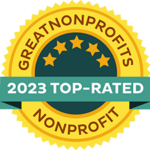WELLBEING ADVICE COLUMN
BURNOUT
october 11, 2022
When facing the dark specter of burnout it can feel impossible to extricate yourself from your work focus. If you can only give what you’ve got, then what is the cost of serving others when your own reserves are depleted? Who is responsible for safeguarding staff from burnout?
In the wellbeing advice column, All Hands and Hearts’ (AHAH) Director of Wellbeing responds to an AHAH team member who writes in to find out.
“I am really worried that I might be suffering from burnout. How do I find out?
How much am I responsible vs the responsibility of my managers? “
Thank you for your courage to reach out with this very important question.
Burnout is unfortunately quite prevalent in the humanitarian sector and a subject that must be addressed not solely by yourself and your self-care activities, but also through the creation and implementation of an accountable burnout prevention infrastructure within the organization.
To this point, humanitarian psychologist, Alessandra Pigni cited:
Burnout researchers indicate six main contributing factors to burnout: work overload; lack of control over the work; insufficient rewards; workplace community problems, such as incivility and a lack of support among coworkers; lack of fairness, such as inequality of pay, promotions or workload; and conflict between one’s personal values and the requirements of a job.
Alessandra Pigni
PROGRAM AND DEPARTMENTAL ASSESSMENT
Many have heard me say that I feel one of the most important things we can do in our organization is to ensure that our outward facing humanitarian principles are in alignment with our inward facing humanitarian principles.
Here are a few practical questions that managers and leaders can answer in order to proactively cultivate a culture that safeguards employees from burnout:

1. How does your program or department proactively encourage a healthy sense of work-life balance?
How are reasonable working hours determined?
What is the average number of hours per week your staff and colleagues are working?
If on and off program staff members work beyond their expected working hours, is time for time encouraged?
How are on and off program staff work-loads:
- Determined?
- Communicated?
- Safeguarded?
How are the differences between a deadline that has flexibility and an emergency task communicated?
Do job descriptions match the tasks that are delegated to staff?
What are the necessary staffing requirements in order to maintain healthy staff members?
2. How are on and off program staff members encouraged to take vacations or R&R?
Who is safeguarding the frequency of R&Rs and vacations for on program staff?
How long and how frequently are off program staff taking vacation/time off?
- How are departments and managers proactively determining and supporting adequate amounts of time off for off program staff?
3. Are you or your staff being treated unfairly or treating staff unfairly?
How is this actively addressed and ameliorated in your program or departmental culture?
4. Is wellbeing practically actualized and integrated into your management style?
How are you encouraging and managing staff and/or volunteers in a way that they feel validated and uplifted?
How is wellbeing addressed in and wellbeing benefits included in job postings and job descriptions?
How are you disseminating information about and supporting wellbeing services and infrastructure training to both on and off program staff members and volunteers?

SELF ASSESSMENT
Stress and overwork impact our health in many ways. The first two areas of questioning I pose to staff and volunteers who are concerned about whether they are nearing a state of burnout are:
1. How are you sleeping?
Do you feel tired and exhausted regardless of how much sleep you’ve had?
Are you plagued by work related dreams or nightmares during the night?
Do work related thoughts awaken you?
2. How are you eating?
Are you experiencing a total lack of hunger? Or not making time to eat?
Do you eat primarily junk-food (salty or sugary carbohydrates)?
Are you binge eating?
These basic building blocks in our hierarchy of needs are a good initial litmus test in determining whether we’re in danger of or already in a state of burnout.
There are several other health related indicators for burnout, such as:
- Frequent head-aches and/or migraines
- Difficulty concentrating
- Negative self-talk
- General anxiety
- Increased irritability, aggressivity and/or overreaction
- Lack of empathy for self and others
- Lowered immune system
- Heart palpitations
- Overwhelming sadness
- Inability to bathe
- Thoughts of not wanting to exist
- Addictive behaviors, which could include:
- Drinking alcohol more frequently or to excess
- Drug use
- Use of pornography
- Gambling
- Over use of video games, binging shows/movies, and/or reading
- Shopping without concern for debt or cost
- Utilizing unhealthy coping mechanisms
- Taking more risks:
- Accepting deployments to higher impact contexts, despite feeling tired and worn-down from previous deployments.
- Asking for additional tasks to build a false sense of self-worth, yet not having the energy or time to accomplish them.
- Promiscuity without concern or plans for health and safety.
These assessments are not an exhaustive means to determine whether you are experiencing burnout or how the organization can create better systems of burnout accountability and prevention. It is a beginning and can orient you as well as our organization, in such a way as to know what needs exist for further support.
THE WHO/ILO NEW REPORT ON MENTAL HEALTH AT WORK
In the WHO/ILO report, the key focus areas for a mentally healthy work dynamic are:
“To prevent work-related mental health conditions through psychosocial risk management, which includes using organizational interventions to reshape working conditions, cultures, and relationships.
To protect and promote mental health at work, especially through training interventions that improve mental health literacy, strengthen skills to recognize and action mental health conditions at work, and to empower workers to seek support.
To support workers with mental health conditions to participate fully and equitably in work through reasonable accommodations, return-to-work programs, and supported employment initiatives.
To create an enabling environment with cross-cutting actions to improve mental health at work through leadership, investment, rights, integration, participation, evidence, and compliance.”

They go on to emphasize that:
“For employers, mitigating psychosocial risk can similarly be achieved by embedding mental health into their existing management system, not as an optional add-on, but as an essential element. Integration should extend across every component of the management system: policy, organization, planning and implementation, evaluation, and action for improvement.“
I think the way the WHO/ILO frame examples of psychosocial risks and organizational interventions that employers can take to address them, are an excellent roadmap we can use to reflect back on the interventions we are actively putting into place and where improvements need to be made.
See the report here.
Remember that you are not alone; there is a process to safeguard and to heal from burnout.
Thank you for your courage to reach out and share your question!












